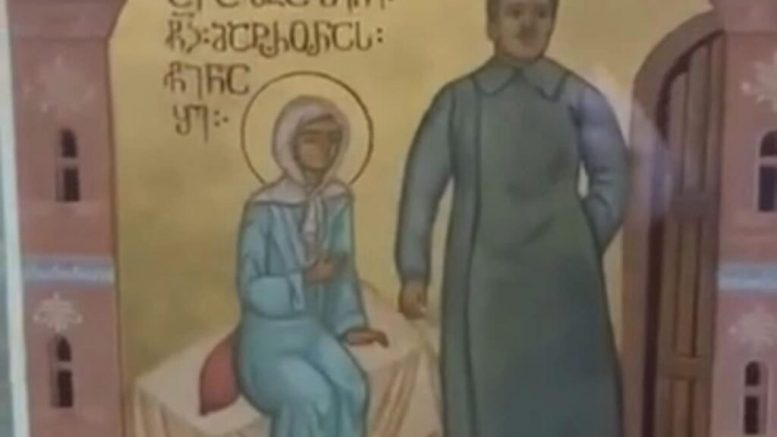Keke would have been so proud.
When her son Joseph was growing up in the small, dusty town of Gori, she dreamed that one day he would be a priest. He did eventually study at the Tbilisi Theological Seminary, but like so many others, he spent more time secretly reading banned books than studying for the priesthood. He was eventually thrown out of the seminary, and according to stores that made the rounds, he told the authorities about all the other students at the seminary who shared his radical views — who were then expelled as well.
Joseph went on to become a revolutionary, and took on the name by which he would become infamous: Stalin.
Stalin seemed to hate organised religion. After the Red Army conquest of his homeland, Georgia, Stalin and his fellow Bolsheviks launched a bloody war on the Orthodox Church. Many churches were destroyed, priests were killed and the Catholicos himself, who had sent an open letter of protest to world leaders meeting in Genoa, was jailed following a show trial.
But things may be a bit more complicated than they appeared. While Stalin himself never publicly returned to the faith of his youth, he did reach out to the church during the Second World War, trying to mobilise the faithful in defence of the Soviet motherland.
Ever since then, and particularly under Putin’s leadership, a mythology has grown up saying that Stalin was always secretly a devout Christian. There are those in Russia who claim that the Soviet dictator communicated with angels who defended the Russian capital Moscow when it was attacked by the German Luftwaffe.
It is in this context that we need to understand the latest bizarre story emerging from Tbilisi, the Georgian capital. A pro-Russian group known as the “Alliance of Patriots” recently donated an icon to the city’s giant Sameba cathedral featuring Saint Matrona of Moscow. Standing next to Matrona is an image of Joseph Stalin. According to some believers, Stalin went to Matrona, who lived in Moscow during the war, to get help and advice.
Images of the icon were shared on social media, including by Giorgi Kandelaki, a former member of Parliament who currently works for SOVLAB, the Soviet Past Research Laboratory. SOVLAB has done outstanding work on Georgia’s recent history. When challenged about the Stalin image, a church spokesman admitted that the image was, in fact, the Soviet dictator. But he insisted that Stalin was playing a supporting role in an icon dedicated to a modern Russian saint. He compared it to an image of a Roman emperor that might appear in a fresco depicting Saint George. The spokesman added that the controversy was meant to overshadow the celebration of Orthodox Christmas this year.
Meanwhile, an activist-artist named Nata Peradze defaced the icon with paint. Far right groups, including the notorious Alt-Info, together with Orthodox priests, then surrounded her house in a menacing protest. Police were called in.
An unholy alliance now exists in Georgia consisting of extreme right-wingers, pro-Russians and the Church. It has been in the news mostly because of their homophobia, which has led to violent attacks on gay people and journalists. In rallying around the image of Stalin, they have revealed another side to their world-view: a renewed “cult of the personality” tailored for the 21st century. Such a thing has no place in an independent, modern and democratic country which is seeking membership in the European Union.
It is time for Georgia to finally put the ghost of Stalin to rest.
This column appears in today’s issue of Solidarity.
